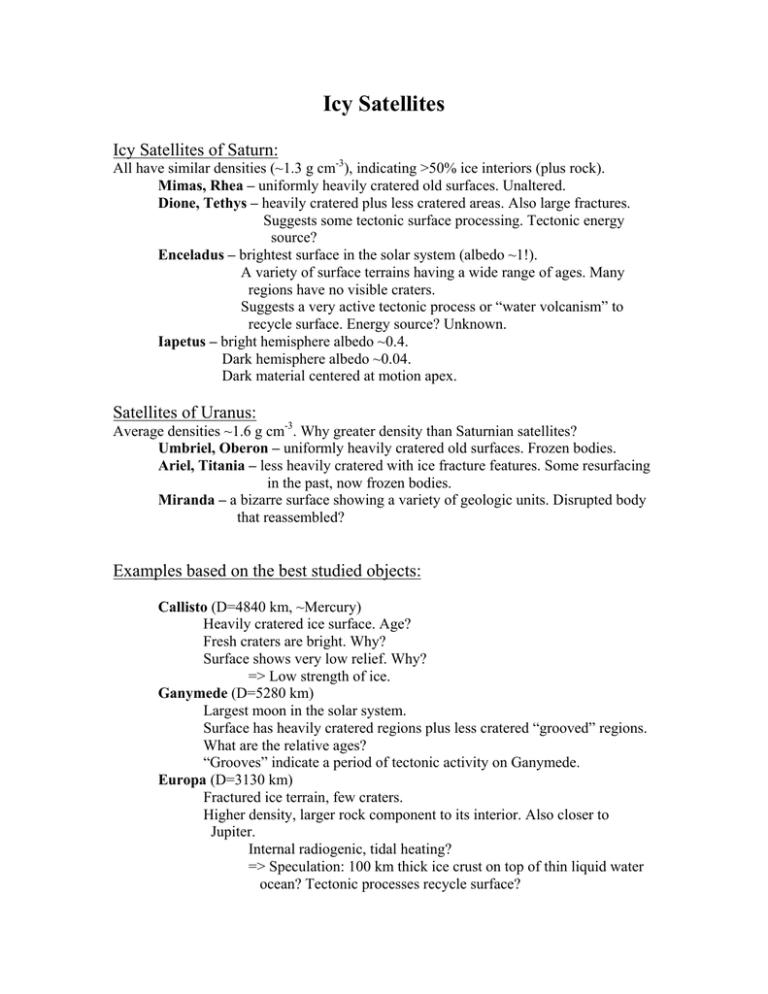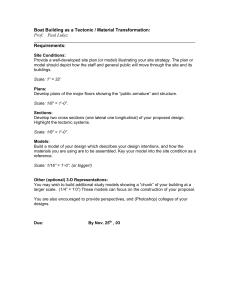Icy Satellites Icy Satellites of Saturn:
advertisement

Icy Satellites Icy Satellites of Saturn: All have similar densities (~1.3 g cm-3), indicating >50% ice interiors (plus rock). Mimas, Rhea – uniformly heavily cratered old surfaces. Unaltered. Dione, Tethys – heavily cratered plus less cratered areas. Also large fractures. Suggests some tectonic surface processing. Tectonic energy source? Enceladus – brightest surface in the solar system (albedo ~1!). A variety of surface terrains having a wide range of ages. Many regions have no visible craters. Suggests a very active tectonic process or “water volcanism” to recycle surface. Energy source? Unknown. Iapetus – bright hemisphere albedo ~0.4. Dark hemisphere albedo ~0.04. Dark material centered at motion apex. Satellites of Uranus: Average densities ~1.6 g cm-3. Why greater density than Saturnian satellites? Umbriel, Oberon – uniformly heavily cratered old surfaces. Frozen bodies. Ariel, Titania – less heavily cratered with ice fracture features. Some resurfacing in the past, now frozen bodies. Miranda – a bizarre surface showing a variety of geologic units. Disrupted body that reassembled? Examples based on the best studied objects: Callisto (D=4840 km, ~Mercury) Heavily cratered ice surface. Age? Fresh craters are bright. Why? Surface shows very low relief. Why? => Low strength of ice. Ganymede (D=5280 km) Largest moon in the solar system. Surface has heavily cratered regions plus less cratered “grooved” regions. What are the relative ages? “Grooves” indicate a period of tectonic activity on Ganymede. Europa (D=3130 km) Fractured ice terrain, few craters. Higher density, larger rock component to its interior. Also closer to Jupiter. Internal radiogenic, tidal heating? => Speculation: 100 km thick ice crust on top of thin liquid water ocean? Tectonic processes recycle surface? Presence of magnetic field suggests an iron core. An iron core requires differentiation. For a differentiated icy satellite, subject to tidal stresses, many models suggest a layer of liquid water. Iron core, radius 600 km. Silicate mantle, 800 km thick. Water ice crust, 150 km thick. Liquid water present at the base of this crust? Life??? Cryovolcanism (water/ice volcanism) at surface suggests liquid water may be present.




